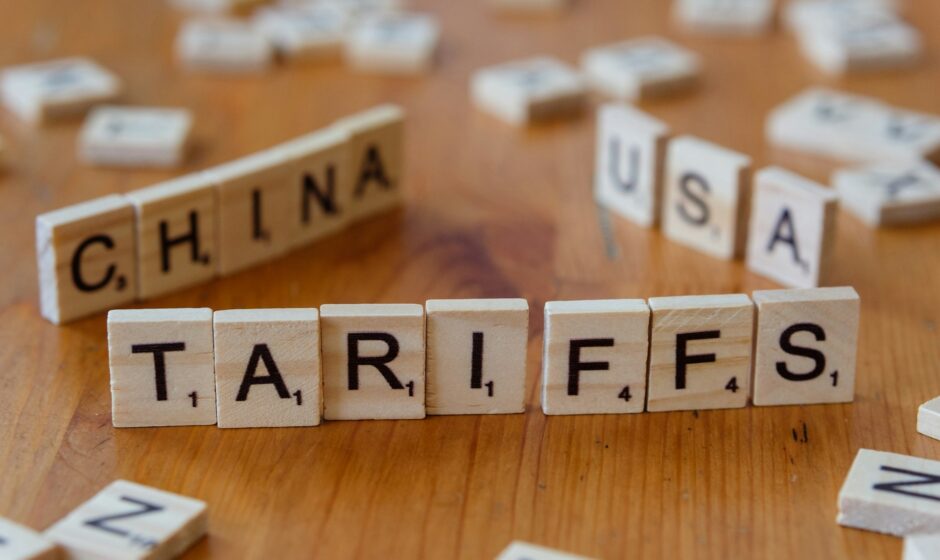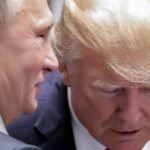Please note that we are not authorised to provide any investment advice. The content on this page is for information purposes only.
Data from the Bureau of Labor Statistics showed that the July Producer Price Index (PPI) jumped 0.9% from the previous month. This marks the fastest monthly increase in the PPI since March 2022 and far surpassed economists’ forecasts of a mere 0.2% rise. The annual rate of wholesale inflation climbed to 3.3%, also exceeding expectations and hitting a five-month high.
Wholesale Inflation Came in Ahead of Estimates
The unexpected surge in wholesale prices raises concerns about persistent inflationary pressures in the US economy. The PPI is a key indicator of what businesses are paying for goods and services, and a significant increase often serves as a leading indicator of what consumers may experience at the checkout counter in the coming months.
The report also highlights the potential impact of recent trade policies and tariffs, which some analysts believe are beginning to filter through the supply chain. The increase in producer prices suggests that companies may be facing higher costs and could be looking to pass those costs on to consumers, further fueling inflation.
The data comes at a critical time for the Federal Reserve. Wall Street had been widely expecting the central bank to cut interest rates at its next meeting, but this latest inflation report could complicate that decision. While some officials have expressed confidence in lowering borrowing costs to support a slowing economy, the strong PPI numbers add to the existing worries about a potential re-acceleration of inflation.
Notably, while US inflation has gradually come down over the last two years, it is still higher than the 2% that the Fed targets. Fed chair Jerome Powell sees upward pressure on inflation amid President Donald Trump’s tariffs. While Trump has lowered the “reciprocal tariffs” on most countries to 10%, there is uncertainty over the future trajectory of these rates, as they are contingent upon trade agreements.
Trump Has Called for a Rate Cut
President Trump has been quite critical of Powell and has called for rates to be slashed to 1% which would help lower the borrowing costs. Notably, interest payments are now the second biggest constituent of Federal expenditure, and the US government is expected to pay over $1.2 trillion as interest on its national debt, which has surpassed $36 trillion.
Trump has admonished Powell several times for not cutting rates. Most recently, he threatened to sue Powell over what he has alleged are irregularities in the construction of the Fed’s headquarters.
“Jerome ‘Too Late’ Powell must NOW lower the rate,” said the President on Truth Social. He added, “Steve ‘Manouychin’ really gave me a ‘beauty’ when he pushed this loser. The damage he has done by always being Too Late is incalculable. Fortunately, the economy is sooo good that we’ve blown through Powell and the complacent Board.”
Powell Has Held Back on Rate Cuts Due to Inflation Worries
Notably, while Trump appointed Powell as the Fed chair, the relations between the two were quite fraught as Powell raised rates during Trump’s presidency, much to his displeasure. In a 2019 tweet, Trump questioned whether Powell or Chinese President Xi Jinping was “our bigger enemy.”
In 2022, Joe Biden reappointed Powell as the Fed chair for four years, and his current tenure would last until mid-2026.
Powell Might Signal Any Change in Fed Policy at Jackson Hole Meeting
While the next Fed meeting is scheduled for September, we might get insights into the Fed’s policy next week as the Kansas City Fed hosts its annual economic policy symposium in Jackson Hole.
As Deutsche Bank analysts aptly wrote in their note, the event has “historically often been used for the Fed to signal policy shifts.”
They added, “It was last year that Chair Powell said that the ‘time has come for policy to adjust’, just weeks before they cut rates for the first time since the pandemic. So all eyes will be on that conference for any fresh signals on the likelihood of rate cuts,” they added.
Trump Criticized Goldman Sachs
Meanwhile, Trump has been critical of economists who believe his tariffs are inflationary and would mostly be borne by the US consumer.
Trump has publicly and sharply criticized Goldman Sachs and its CEO, David Solomon, following a recent report from the financial giant that analyzed the economic impact of the administration’s tariff policies. The rebuke, delivered on Truth Social, accused the bank of making “bad predictions” and suggested that Solomon should “focus on being a DJ” instead of running a major financial institution.
The core of the dispute lies in a Goldman Sachs research note, which suggests that the burden of the President’s tariffs is being disproportionately shouldered by American businesses and consumers, rather than foreign exporters. The report found that while U.S. businesses and consumers have absorbed a significant portion of the costs to date, American consumers’ share of the tariff burden is projected to increase substantially over time.
Who Pays for Trump’s Tariffs?
This analysis directly contradicts a key tenet of the President’s trade policy, which has consistently argued that foreign countries are paying for the tariffs. In his post, the President reiterated his long-held position that “trillions of dollars” are flowing into the U.S. Treasury, and that tariffs have not caused inflation or other problems for the American economy. He insisted that the costs are being picked up by “companies and governments, many of them foreign.”
The President’s criticism of Goldman Sachs comes amid a broader debate about the inflationary effects of his trade policies. Recent consumer price index (CPI) data showed that while overall inflation held steady in July, core inflation—which excludes volatile food and energy prices—accelerated. Some economists believe this indicates that the higher costs from tariffs are beginning to filter through the supply chain and will eventually be passed on to consumers in the form of higher prices.
Notably, companies have been wary of raising prices as they are wary of getting into the Trump administration’s crosshairs. Previously, the White House strongly condemned a reported plan by Amazon to display a breakdown of tariff costs on its e-commerce platform, calling the potential move a “hostile and political act.”
Amazon Dropped Plans to Show Tariff Breakdown
Following the White House’s fiery response, Amazon issued a clarification. A company spokesperson stated that while an internal team had considered the idea of listing import charges on some products within its budget-focused “Amazon Haul” store, the plan was never approved and was not going to be implemented on any of its properties, including the main site.
Meanwhile, as tariff costs start biting companies, especially as they run through the previous inventories, they would be hard-pressed to choose between raising prices or taking a hit on their margins.
#July #Wholesale #Inflation #Exceeds #Estimates #Tariffs #Bite


